History of Blackjack
Over the years the origin of Blackjack, like many other games, has eluded researchers for a long time and which continues to be hotly debated to this day.
 ver the years the origin of Blackjack, like many other games, has eluded researchers for a long time and which continues to be hotly debated to this day. Till date there has been no clear consensus, but most agree it probably originated in French casinos around 1700, where it was called Vingt-et-Un which, translated, means twenty-one. Most believe it was probably derived from the French card games, Chemin de Fer, and French Ferme, which were in vogue at that time.
ver the years the origin of Blackjack, like many other games, has eluded researchers for a long time and which continues to be hotly debated to this day. Till date there has been no clear consensus, but most agree it probably originated in French casinos around 1700, where it was called Vingt-et-Un which, translated, means twenty-one. Most believe it was probably derived from the French card games, Chemin de Fer, and French Ferme, which were in vogue at that time.

Another of its version was prevalent in Spain, which was called 'One and Thirty'. The basic rule of the Spanish version was to reach 31 with a minimum of three cards.
A theory that’s also doing the rounds is that Blackjack was an invention by the Romans. It is believed that Romans used to play this game with wooden blocks of different numerical values. This theory holds some weight as Romans loved gambling, but that by no means confirms the theory.
Among the various versions of the game, 'Vingt-et-Un’ or ‘21’ continued to grow in popularity and reach. It gradually spread to North America thanks to French colonists and soon after it was played throughout the continent. The rules of Blackjack were then different from those of modern or contemporary Blackjack. Just to elaborate, in this form of Blackjack, only the dealer was permitted to double. Also, a betting round was there between each of the playing cards dealt.
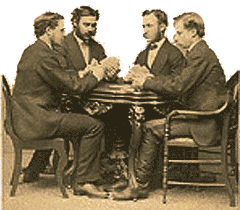 The game was still termed ‘21’ when it gained popularity in Nevada in 1931 as the State first chose to make gambling legal. To draw more people to the game, some casinos then offered a special bet: A hand featuring either of the black jacks (the Jack of Spades or that of Clubs) plus the Ace of Spades would pay 10-to-1 odds on the lucky player’s bet. Although casinos later discontinued this peculiar payout, the name ‘blackjack’ or ‘black jack’ remained, as the game is known today.
The game was still termed ‘21’ when it gained popularity in Nevada in 1931 as the State first chose to make gambling legal. To draw more people to the game, some casinos then offered a special bet: A hand featuring either of the black jacks (the Jack of Spades or that of Clubs) plus the Ace of Spades would pay 10-to-1 odds on the lucky player’s bet. Although casinos later discontinued this peculiar payout, the name ‘blackjack’ or ‘black jack’ remained, as the game is known today.
Five of Clubs: “Watson’s card”. The name has nothing to do with Sherlock Holmes but refers to a famous gambler who is supposed to have won £10,000 at Faro through his wager in connection with this card.
Blackjack was not conceived by any one person at one definite point of time. On the contrary, blackjack has evolved over centuries; it continues to evolve and grow even today, thanks to the Internet. Fuelling its popularity the online casino industry has developed various versions of the game which has truly revolutionized it.
Now a few reputed casino operators have started an innovative and far more enjoyable concept of this game: live blackjack game with real dealers. Live Blackjack is the most advanced way to play your favourite casino game right in the comfort of your home, without having to go a long way to a field-based casino.
Sources:
By Simon Wintle
Spain • Member since February 01, 1996 • Contact
I am the founder of The World of Playing Cards (est. 1996), a website dedicated to the history, artistry and cultural significance of playing cards and tarot. Over the years I have researched various areas of the subject, acquired and traded collections and contributed as a committee member of the IPCS and graphics editor of The Playing-Card journal. Having lived in Chile, England, Wales, and now Spain, these experiences have shaped my work and passion for playing cards. Amongst my achievements is producing a limited-edition replica of a 17th-century English pack using woodblocks and stencils—a labour of love. Today, the World of Playing Cards is a global collaborative project, with my son Adam serving as the technical driving force behind its development. His innovative efforts have helped shape the site into the thriving hub it is today. You are warmly invited to become a contributor and share your enthusiasm.

Related Articles
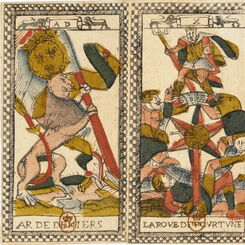
The Parisian Tarot
The “Parisian Tarot”, early 1600s, with imagery and design synthesizing several influences.
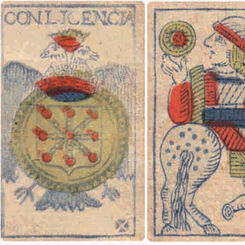
Navarra Pattern, 1793
Navarra pattern by an unknown cardmaker with initials I. I., 1793.
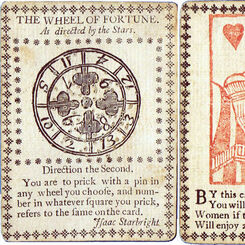
Fortune Telling playing cards
English Fortune Telling cards probably published c.1770.

Arms of English Peers
The Arms of English Peers playing cards were first published in 1686. Heraldry, or a knowledge of th...
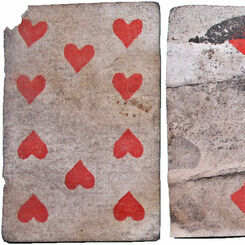
Archaeological find: old playing cards under the floorboards
The municipal archaeological service in Dordrecht (Netherlands) recently found some antique playing ...
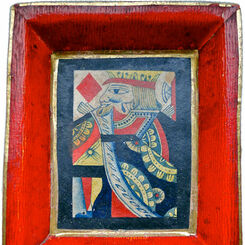
Pope Joan Trays
Some traditional Pope Joan boards comprise a circular tray, others are square, divided into sections...
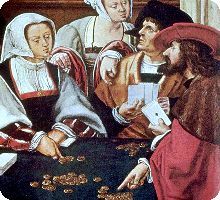
Playing Cards & Gaming
Soon after their first appearance in Europe we hear of playing cards being banned by the authorities...
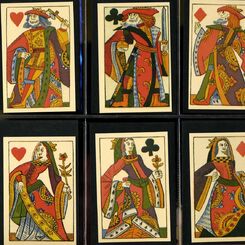
1: Playing Cards and their History: An Introduction and some links to other sites
What was considered the first mention of playing cards in England is in 1463 when Edward I banned th...
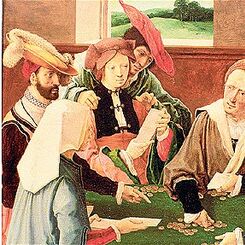
Netherlands
Playing cards have been known in the Low Countries since the 14th century

John Llewellyn, playing card manufacturer, London, 1778-1785
John Llewellyn, playing card manufacturer, London, 1778-1785

History of Online Casinos
Online casinos appeared shortly after the internet became a more mainstream tool for the public to u...

History of Court Cards
The court cards in English packs of playing cards derive from models produced by Pierre Marechal in ...
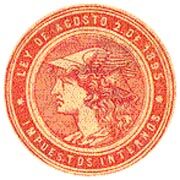
Argentina Tax Stamps on playing cards 1895-1968
Argentina Tax Stamps on playing cards 1895-1968

David Hurter, Schaffhausen
David Hurter built up a playing card business in Schaffhausen during the 18th century.
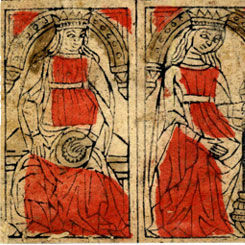
XV Century Italian Playing Cards
Cards from a pack of an early form of north Italian playing cards, with the swords back-to-back and ...

Sicilian playing cards by Antonio Monasta
"Il Leon" Sicilian playing cards, 40-card pack based on Spanish designs, made in Sicily by Antonio M...
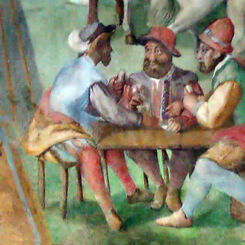
Italian Playing Cards
The first reliable evidence that playing cards were being used in Italy is from 1376, when a game ca...
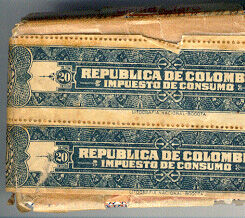
Impuesto de Timbre para Naipes
EL CONGRESO DE COLOMBIA. LEY 69 DE 1946, por la cual se elevan las tarifas de algunos impuestos indi...
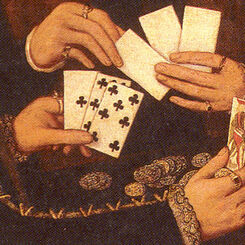
History of English Playing Cards & Games
The History of English Playing Cards dates probably from the mid 15th century
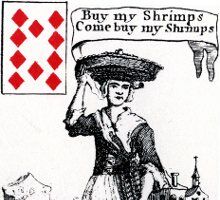
Cries of London
The cards were printed from copper plates, with the red suit symbols being applied later by stencil....
Most Popular
Our top articles from the past 60 days






















